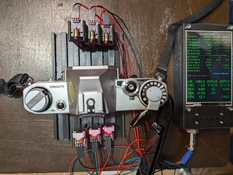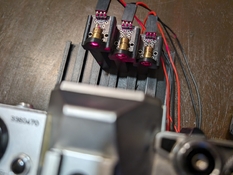Grenversity
Member
Just built the tester and I wanna say thank you for the detailed explanations.
Here are my results for a Canon AV-1. As expected, there are a lot of inconsistencies at higher shutter speeds. Am I reading the results correctly by saying that the first curtain is slowing down/ second curtain is speeding up and thus resulting in laser 2 being wayyyy off and at maximum speeds, even closed at 1/1000. The AV-1 is aperture priority so I had to get these results by putting my phone flash in front of the camera and taking the picture at the shutter speed I wanted, which means the numbers are probably off since I couldn't set them.

This was my first attempt at assemblying it. Since then I've added a small wood panel with smaller holes so the laser size is smaller and added a base so everything stays aligned.

Here are my results for a Canon AV-1. As expected, there are a lot of inconsistencies at higher shutter speeds. Am I reading the results correctly by saying that the first curtain is slowing down/ second curtain is speeding up and thus resulting in laser 2 being wayyyy off and at maximum speeds, even closed at 1/1000. The AV-1 is aperture priority so I had to get these results by putting my phone flash in front of the camera and taking the picture at the shutter speed I wanted, which means the numbers are probably off since I couldn't set them.
This was my first attempt at assemblying it. Since then I've added a small wood panel with smaller holes so the laser size is smaller and added a base so everything stays aligned.










 )
)




